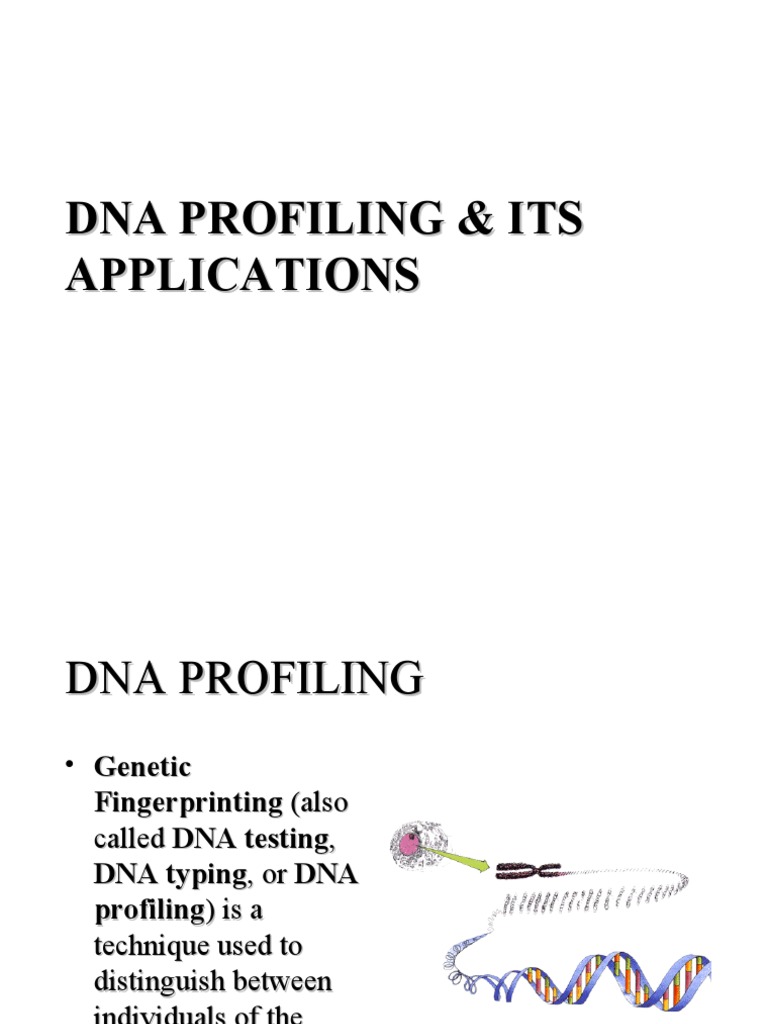Ever wonder how a single strand of hair, a minuscule speck of saliva, or even a long-decomposed bone can unequivocally link a person to a crime scene? The answer lies in a process called DNA profiling, sometimes referred to as DNA fingerprinting. It’s a powerful tool that has revolutionized forensic science, paternity testing, and even our understanding of evolutionary relationships. But behind the sophisticated technology and complex laboratory procedures lies a surprisingly elegant concept, easily grasped even without a background in molecular biology.
Think of DNA profiling as creating a highly specific identifier, like a social security number, but for your genetic makeup. Instead of digits, it uses variations in your DNA sequence that are uniquely yours. These variations are called Short Tandem Repeats (STRs). It is a key component. Let’s delve into the nitty-gritty.
1. The Blueprint: Understanding DNA as a Code
Imagine DNA as the ultimate instruction manual, containing all the information needed to build and operate a human being. This manual is written in a four-letter alphabet: A, T, C, and G, representing the four nucleotide bases adenine, thymine, cytosine, and guanine. These bases pair up in a specific manner (A with T, and C with G) to form the double helix structure that’s so iconic.
The order of these bases determines everything from your eye color to your predisposition to certain diseases. Most of this sequence is the same across the human population, but certain regions exhibit high variability, and that is where the magic happens.
2. Unlocking the Variations: Short Tandem Repeats (STRs)
Now, imagine small sections of this instruction manual where short sequences of letters are repeated, over and over again. For example, the sequence “GATA” might be repeated multiple times at a specific location on a chromosome: GATA GATA GATA GATA. These repetitive sequences are called Short Tandem Repeats, or STRs.
Crucially, the number of times these sequences are repeated varies widely from person to person. One person might have 7 repeats of “GATA” at a particular location, while another might have 12, and yet another might have 9. These variations are inherited from your parents, meaning you get one copy of each STR from your mother and one from your father.
Think of STRs as genetic stutters. These stutters don’t usually affect how our bodies function but they act as highly distinctive markers, much like a signature.
3. The Amplification Process: PCR to the Rescue
Often, the amount of DNA available at a crime scene is minuscule. To analyze these tiny samples, scientists use a technique called Polymerase Chain Reaction (PCR). PCR is like a molecular photocopy machine; it allows scientists to make millions or even billions of copies of specific DNA regions, in this case, the STR regions. The PCR ensures that there is enough material to perform the analysis.
Imagine trying to read a faint, smudged inscription. PCR is like using a magnifying glass and a bright light to make the inscription clearer and easier to read.
4. Separating the Fragments: Gel Electrophoresis or Capillary Electrophoresis
After PCR has amplified the STR regions, the next step is to separate the DNA fragments according to their size. This is typically done using a technique called gel electrophoresis or, more commonly these days, capillary electrophoresis. These methods utilize an electric field to pull DNA fragments through a gel-like substance or a narrow capillary tube. Smaller fragments move faster than larger fragments, resulting in a separation based on size.
Imagine pouring different sized marbles down a ramp. Smaller marbles will reach the bottom faster than larger ones. Electrophoresis works similarly, but with DNA fragments.
5. Reading the Results: Creating the DNA Profile
The separated DNA fragments are then detected and visualized. This is usually done using fluorescent dyes that attach to the DNA. The resulting pattern of bands or peaks represents the DNA profile. Each band or peak corresponds to a specific STR allele (a particular number of repeats at a given location). By analyzing multiple STR locations (typically 13 or more in forensic applications), scientists can create a highly specific DNA profile.
Think of it as creating a barcode for your DNA. This barcode is unique to you and can be used to identify you with remarkable accuracy.
6. Matching the Profiles: The Power of Comparison
The final step involves comparing the DNA profile from the evidence sample (e.g., from a crime scene) with the DNA profile of a suspect or a reference sample. If the profiles match across all the STR locations tested, it provides very strong evidence that the suspect was present at the crime scene. The probability of two unrelated individuals having the same DNA profile across all the STR locations is extremely low, often less than one in a billion.
Imagine having two barcodes. If you scan them and they show identical sequences, you can safely assume that both barcodes belong to the same item. Similarly, if two DNA profiles match, you can reasonably assume that they originated from the same person.
In essence, DNA profiling leverages the natural variation in our genetic code to create a unique identifier. From crime scene investigations to tracing ancestry, this technique offers a powerful lens through which to explore our individuality and connections. Its precision and reliability have redefined fields like forensics, while simultaneously raising ethical questions about privacy and data security. The journey into the realm of DNA profiling promises to challenge assumptions and spark contemplation.










Leave a Comment